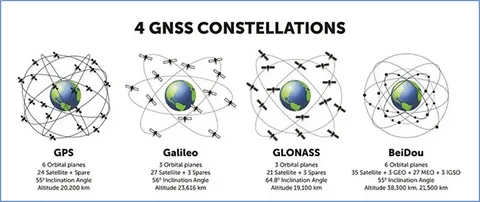Global Navigation Satellite Systems (GNSS) have become an integral part of our daily lives, enabling accurate positioning, navigation, and timing (PNT) services across industries. From smartphones and autonomous vehicles to agriculture and aviation, GNSS supports a wide array of applications. As we look ahead, the future of GNSS: trends, innovations, and challenges offers a glimpse into how this critical technology will evolve in the coming years.
Emerging Trends in GNSS Technology
As demand for more accurate and reliable positioning grows, GNSS is undergoing significant transformation. One of the most notable trends is multi-constellation support, where receivers can access signals from GPS, Galileo, GLONASS, BeiDou, and other regional systems. This enhances positioning accuracy and availability, especially in urban environments and challenging terrains.
Another major trend is the integration of GNSS with other technologies, such as 5G, AI, and IoT. This convergence allows for real-time, centimeter-level accuracy required in applications like precision agriculture, smart cities, and autonomous systems.
Innovations Driving the Next Generation of GNSS
The future of GNSS is being shaped by innovative developments that push the boundaries of what’s possible. High-precision GNSS is becoming more accessible thanks to advancements in Real-Time Kinematic (RTK) and Precise Point Positioning (PPP) techniques. These technologies enable sub-meter and even centimeter-level accuracy, which is essential for critical infrastructure monitoring and automated transport systems.
Another exciting innovation is the rise of GNSS spoofing and jamming countermeasures. As reliance on GNSS grows, so does the need for robust security. Enhanced signal authentication and interference mitigation tools are being developed to protect against malicious threats and ensure data integrity.
Challenges on the Road Ahead
Despite the progress, the GNSS ecosystem faces several challenges. Signal vulnerability remains a pressing concern. GNSS signals, which are relatively weak by the time they reach Earth, can be easily disrupted by natural or man-made interference. This raises concerns about the reliability of navigation services in safety-critical sectors such as aviation and defense.
Moreover, the regulatory and policy landscape must keep pace with technological advancements. Harmonizing international standards, ensuring spectrum availability, and addressing privacy concerns are critical to unlocking the full potential of GNSS innovations.
Conclusion: Navigating Toward a Smarter Future
As we explore the future of GNSS: trends, innovations, and challenges, it’s clear that GNSS will continue to play a foundational role in shaping our connected world. With continued investment in research, security, and integration, GNSS will evolve to meet the demands of tomorrow’s digital infrastructure.
However, to fully realize its potential, stakeholders across the public and private sectors must collaborate to overcome technical, regulatory, and operational hurdles. By doing so, we can ensure that the future of GNSS is not only innovative but also secure, inclusive, and resilient.

